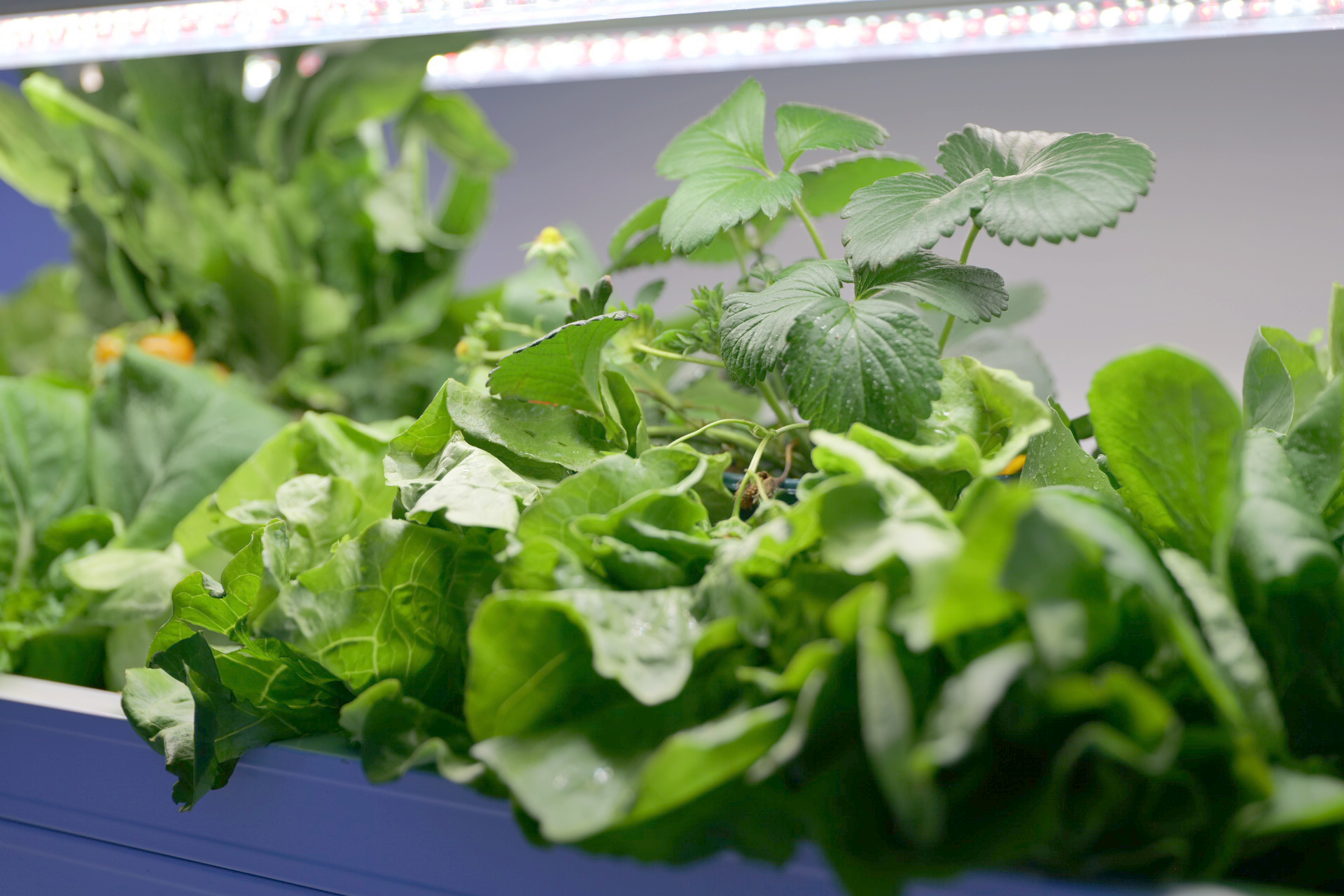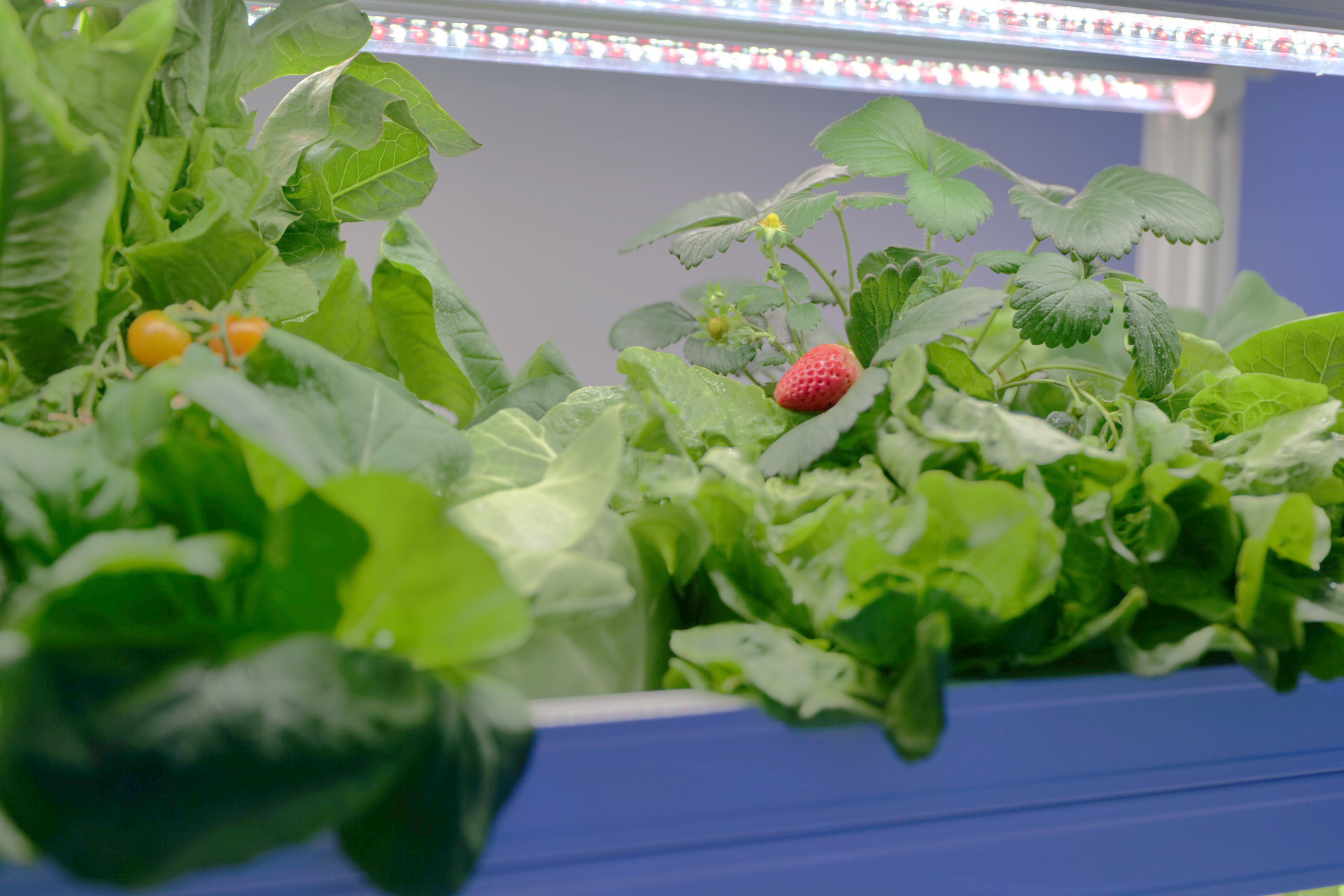Against the backdrop of global urbanization exceeding 56% and shrinking cultivated land area, hydroponic vegetables are reshaping the landscape of agricultural production in a revolutionary manner. This soilless cultivation technology completely breaks the traditional understanding that "all things grow in the soil." It places plant roots in a nutrient solution circulation system rich in nutrients, achieving efficient vegetable growth through precise regulation of water, nutrients, and oxygen supply. Data shows that by 2023, the global hydroponic agriculture market has reached $12.7 billion, with a compound annual growth rate of over 18%, making it the most promising development direction in modern agriculture.


In terms of technical essence, a hydroponic system delivers the prepared nutrient solution to the planting trough via an intelligent circulation pump, allowing plant roots to directly absorb 16 essential elements such as nitrogen, phosphorus, and potassium. Different from traditional soil planting, which relies on microorganisms to decompose nutrients, hydroponic technology adopts a precision management model, monitoring the pH value, electrical conductivity (EC value), and dissolved oxygen content of the nutrient solution in real time through sensors. Take a modern hydroponic farm in the Netherlands as an example: its equipped intelligent control system can keep the pH value fluctuation within ±0.1 and the EC value error within 3%. Such fine-tuned regulation shortens the average growth cycle of vegetables by 40% and increases unit area yield by 2.8 times.
Traditional soil planting suffers from severe water waste. According to statistics from the United Nations Food and Agriculture Organization, conventional agriculture consumes 200–500 liters of water to produce 1 kg of vegetables, with 80% lost to evaporation, seepage, and other factors. In contrast, hydroponic systems use a closed-loop circulation design, achieving a nutrient solution reuse rate of over 95% through filtration and disinfection. In Israel's desert agriculture demonstration zone, the water consumption per unit of hydroponic tomatoes is only 1/15 of that in soil cultivation, making this water-saving feature the preferred technology for agricultural transformation in arid regions.
The nutritional regulation advantages of hydroponic technology are fully validated by scientific research data. Tests by the Chinese Academy of Agricultural Sciences show that the vitamin C content in hydroponic lettuce is 52% higher than that in soil-grown lettuce, β-carotene content increases by 38%, and the content of minerals such as calcium, iron, and zinc increases by an average of 45%. More notably, adjusting the nutrient solution formula can effectively reduce the nitrate content in vegetables—a potential carcinogen whose content in hydroponic vegetables is only 1/3 of that in traditional planting, truly achieving the health standard of "high nutrition, low risk."
Free from the soil environment, hydroponic vegetables are naturally isolated from more than 200 diseases such as root-knot nematodes and soil-borne fungi. Meanwhile, the closed planting space significantly reduces external pest infestations. A U.S. Department of Agriculture survey shows that pesticide use in hydroponic farms is only 5% of that in traditional farms, and 70% of hydroponic vegetables in Japan have obtained JAS organic certification. This feature of eliminating pesticide residues from the source makes them the preferred ingredient for baby food and high-end catering markets.
As the most widely applied hydroponic technology, DFT maintains a nutrient solution layer of 8–15 cm in the planting trough, completely submerging plant roots. The oxygenation pump equipped in the system can generate 3,000–5,000 microbubbles per minute to ensure sufficient oxygen for the roots. This technology is particularly suitable for leafy vegetables such as lettuce and water spinach. In a hydroponic farm in Chiba Prefecture, Japan, the DFT system achieves year-round, 365-day continuous lettuce production, with an annual output of 2.2 tons per trough.
The NFT technology adopts a shallow nutrient solution flow design of 1–2 cm, allowing part of the plant roots to be immersed and part exposed to the air, creating a unique "dry-wet alternation" growth environment. Through a tidal irrigation system, the nutrient solution circulates 6–8 times per hour, ensuring both nutrient supply and root respiration. The equipment cost of this technology is only 40% of that of DFT, making it particularly suitable for small-scale home planting. In a UK balcony agriculture project, a single NFT device can produce 50 kg of fresh vegetables annually.
As the most cutting-edge hydroponic technology, aeroponics atomizes the nutrient solution into particles of 50–100 microns through high-pressure nozzles and sprays them directly onto the surface of plant roots. This "air cultivation" mode expands the contact area between roots and nutrients by more than 300 times, with a growth rate 40%–60% faster than traditional hydroponics. In a Singapore vertical farm, strawberries cultivated by aeroponics only take 45 days from planting to harvest, with a 2.3-fold increase in single-plant yield. However, the equipment cost as high as $800–1,200 per square meter limits its large-scale application.
Home hydroponic systems can be divided into economical and intelligent types: The economical solution includes basic equipment such as planting containers (food-grade plastic boxes/PVC pipes), micro-circulation pumps (3–5W), air stones, and timers, with a total cost of about 300–500 yuan; intelligent hydroponic machines integrate automatic temperature control, lighting, and circulation systems, and some products support remote control via mobile APP, priced at 1,500–3,000 yuan. In addition, special hydroponic nutrient solutions need to be selected according to the planted crops. Universal nutrient solutions can meet the needs of 2–3 square meters of planting area per liter.
Vegetables suitable for home hydroponics can be divided into three categories: Leafy vegetables (lettuce, endive, arugula) have a growth cycle of 25–40 days and require low light; herbs (basil, mint, rosemary) have ornamental value and can be picked and used at any time; fruit vegetables (cherry tomatoes, strawberries) have a longer growth cycle (60–90 days) but high ornamental and edible value. Novices are advised to start with easy-to-grow varieties such as lettuce and water spinach.
Seed pretreatment: Adopt the "soaking + germination" technique. Soak seeds in 25℃ warm water for 8–12 hours, wrap them in a wet paper towel, and place them in a 28℃ incubator until 60% of the seeds show white sprouts before sowing;
Transplanting technique: Use planting substrates (sponge blocks/ceramsite/rock wool) to fix seedlings, ensuring that 2/3 of the roots are immersed in the nutrient solution;
Intelligent management: Monitor pH (5.5–6.5) and EC (1.2–2.5mS/cm) values daily, and replace 1/3 of the nutrient solution weekly;
Environmental control: Equip with LED supplementary lights (red-blue light ratio 3:1) to ensure 8–10 hours of effective daily light, and control the temperature at 18–26℃.
Data from the Chinese Ministry of Agriculture and Rural Affairs shows that the market scale of organic vegetables in 2023 exceeded 120 billion yuan, with the proportion of hydroponic vegetables increasing from 8% in 2018 to 23%. In the high-end consumer market, hydroponic vegetables have significant premium capabilities: The price of hydroponic lettuce on the Hema Fresh platform reaches 12.8 yuan/500g, 60% higher than ordinary lettuce, with a repurchase rate of 45%. The outbreak of the prepared food industry has also brought new opportunities to hydroponic vegetables, with the sales of hydroponic vegetable prepared foods on Dingdong Freshbuy increasing by 210% annually.
Many countries around the world have incorporated hydroponic agriculture into their strategic plans: The EU's "Green New Deal" has established a 2 billion euro special fund to support vertical agriculture; China's 14th Five-Year National Agricultural and Rural Science and Technology Development Plan clearly states the goal of "breaking through core hydroponic equipment"; Singapore implements the "30 by 30" plan, aiming to achieve 30% food self-sufficiency by 2030, with hydroponic technology as the core support. Meanwhile, the application of Internet of Things technology has enabled fully digital management of hydroponic systems. An AI control system developed by an Israeli company can automatically optimize 12 growth parameters, reducing labor costs by 70%.
The industry currently faces three major challenges: initial equipment investment (1,500–3,000 yuan per square meter), energy consumption costs (accounting for 35% of operating costs), and a shortage of technical talent. Innovative solutions include: adopting modular design to reduce initial investment by 30%, using photovoltaic panels + energy storage systems to achieve energy self-sufficiency, and establishing a "technology sharing platform" to provide remote diagnosis services. A Dutch agricultural technology company has helped small and medium-sized enterprises shorten the investment payback period from 5 years to 2.8 years through an equipment leasing + technical trusteeship model.
In the field of space exploration, hydroponic technology has made breakthrough progress: The International Space Station's "Veggie" system has successfully grown more than 10 types of vegetables, providing fresh ingredients for long-term space missions. NASA plans to establish a hydroponic farm in the 2030 Mars mission to solve the food self-sufficiency problem for astronauts. In ground applications, hydroponic technology is being combined with gene editing technology to cultivate "super crops" more adapted to artificial environments—Chinese scientists have successfully developed low-light-tolerant lettuce varieties with a 25% increase in photosynthetic efficiency.
As technology costs continue to decline, hydroponic vegetables will accelerate their entry into thousands of households. Innovative models such as community shared farms, rooftop vegetable gardens, and indoor planting cabinets are emerging, constructing a brand-new consumption scenario of "from farm to table." The agricultural revolution triggered by hydroponic technology not only redefines the way food is produced but also reshapes the symbiotic relationship between humans and nature, providing a brand-new solution for sustainable development.











